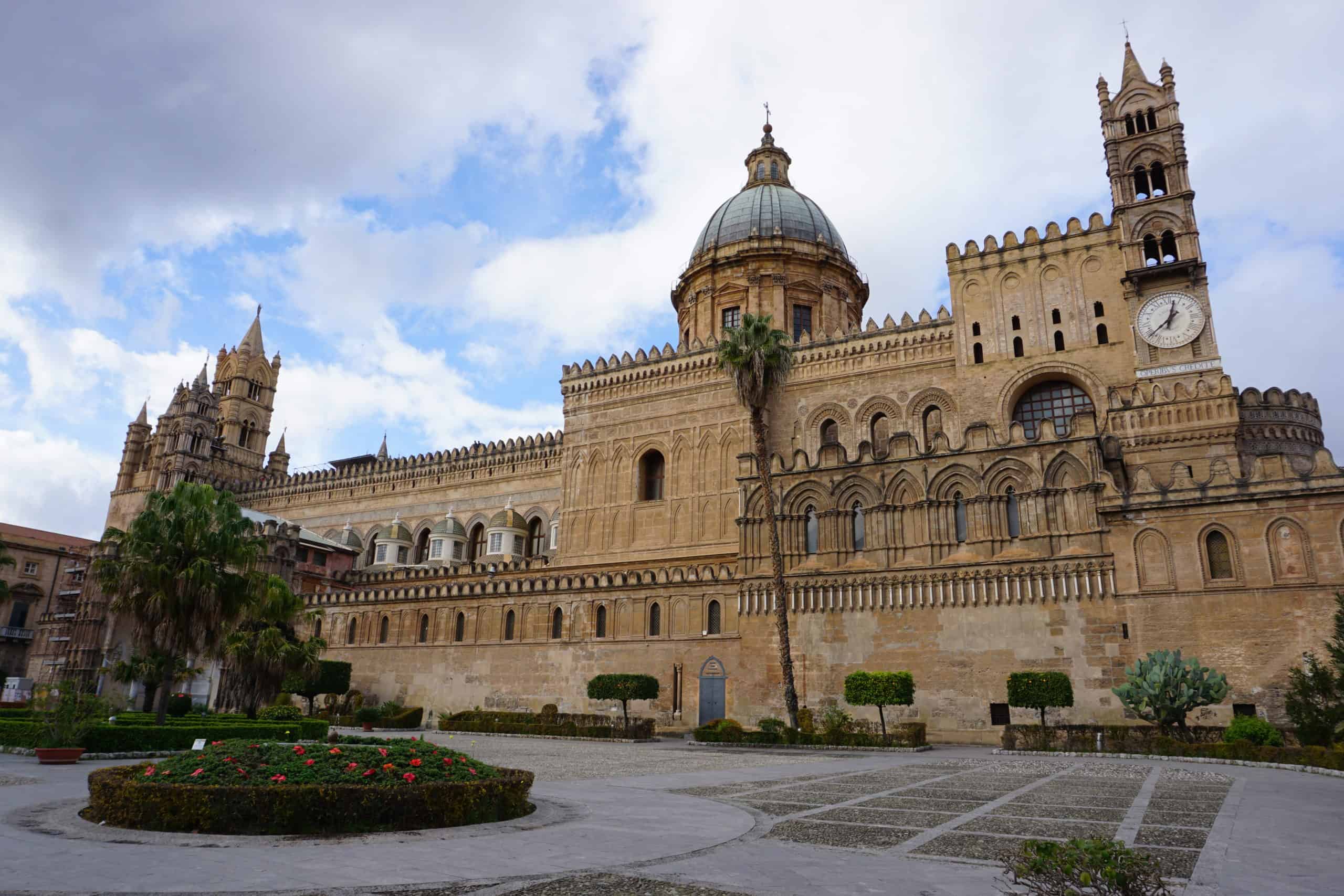Is Sicily Part of Italy? Everything You Need to Know!
Have you ever wondered, “Is Sicily Part of Italy?”
If so, you’ve come to the right pace!
While Sicily is part of Italy, it has a unique culture inspired by its strategic location in the Mediterranean. Just 100 miles off the coast of North Africa, Sicily’s position in the Mediterranean has made it a crossroads of cultures for centuries. With influences from the Ancient Greeks to the Byzantine Empire, from the Moors to the Normans, Sicily boasts stunning landscapes, beautiful beaches, and delicious food.
Sicily is one of my favorite parts of Italy. When I traveled to Sicily with my children, I fell in love with the island. From the beautiful chaos of Catania and the smoking slopes of Mount Etna to the Valley of the Temples in Agrigento and the gilded churches of Palermo, Sicily is a traveler’s dream.
In this post, I discuss the island’s history, focusing on the events that led to Sicily joining a united Italy. Read on to learn more about Sicily.
Please note this post may contain affiliate links. If you click on one, I may earn a small commission at no extra cost to you. See my Privacy Policy for more information.
Is Sicily Considered Part of Italy?
Yes, Sicily is part of Italy.
However, Sicily is not like other regions in Italy: it has a special status with regional autonomy that gives it more power and independence than other regions.
Sicily became a part of Italy in 1861 during the period of unification led by Giuseppe Garibaldi. Before this time, foreign powers had divided and ruled much of Italy. Sicily was enveloped into the new kingdom of Italy, ruled by a mainland king from the far north. While this started off well for Sicily, the northern king mainly ignored Sicily and the rest of southern Italy, plundering these regions and seizing their assets. This destruction of the social order and the installation of corrupt governors opened the door for crime syndicates that later became known as the Mafia.
Jumping forward to 1946, when Italy was founded as a republic following World War II, Sicily became one of the five autonomous regions of Italy. This allows it to have its own parliament, president, government, and laws on some matters, such as education, health, culture, and tourism.
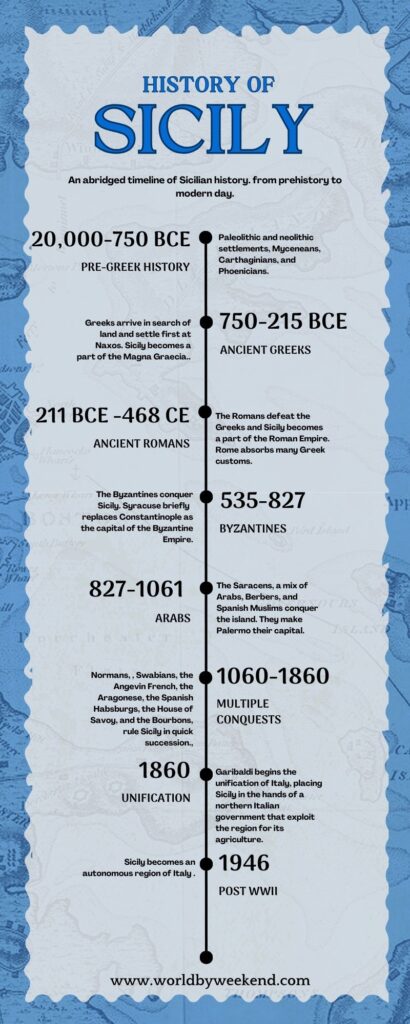
Was Sicily Always Part of Italy?
No, Sicily was not always part of Italy. Over centuries, the island has seen many rulers.
The first known inhabitants of Sicily date back at least 3,000 years. These were the Sicels, the Sicani, and the Elymi tribes. They were colonized first by the Phoenicians and subsequently by the Greeks starting in the 8th century BCE.
Sicily was conquered by the Romans in the 3rd century BCE and remained under Roman rule until the 5th century CE. With the collapse of the Roman Empire, Sicily was invaded by various Germanic tribes, such as the Vandals and the Ostrogoths.
Sicily’s history became even more complex during the Middle Ages when it was ruled by a slew of different foreign powers, such as the Byzantines, the Arabs, the Normans, the Angevins, and the Aragonese.
Sicily only became part of Italy in 1861 when it joined the newly formed Kingdom of Italy under King Victor Emmanuel II. Today, Sicily is still part of Italy, but it has its own regional government and parliament.
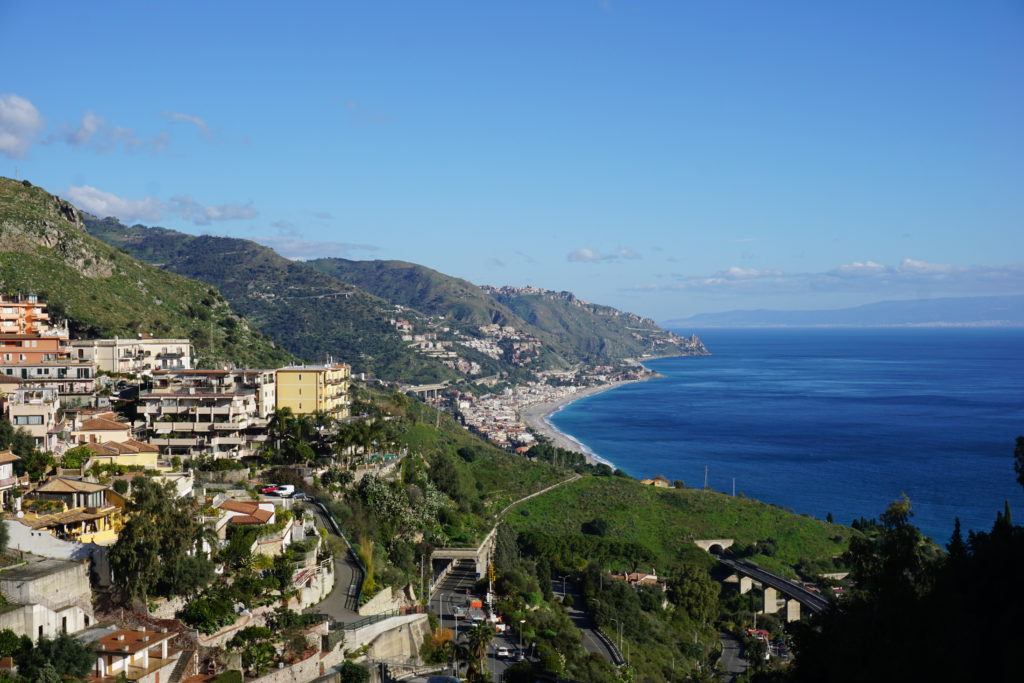
When Did Sicily Become Part of Italy?
Sicily became part of Italy in 1861 during Italian unification, also known as the Risorgimento.
Before this, Sicily had a complex history, ruled by various civilizations like the Romans, Byzantines, Arabs, Normans, and Spaniards. It was often an independent kingdom or under foreign dominion.
In the mid-19th century, Italy underwent a process of political and territorial unification. This movement aimed to unite the many independent states and regions into one nation. As part of this consolidation, Sicily officially became part of the Kingdom of Italy in 1861 under the rule of King Victor Emmanuel II.
Despite its absorption into a unified Italy, Sicily has maintained its unique cultural identity, with a distinctive language, culinary traditions, and heritage. To this day, many of the top sights in Sicily are remnants of the many cultures that have landed on its shores.
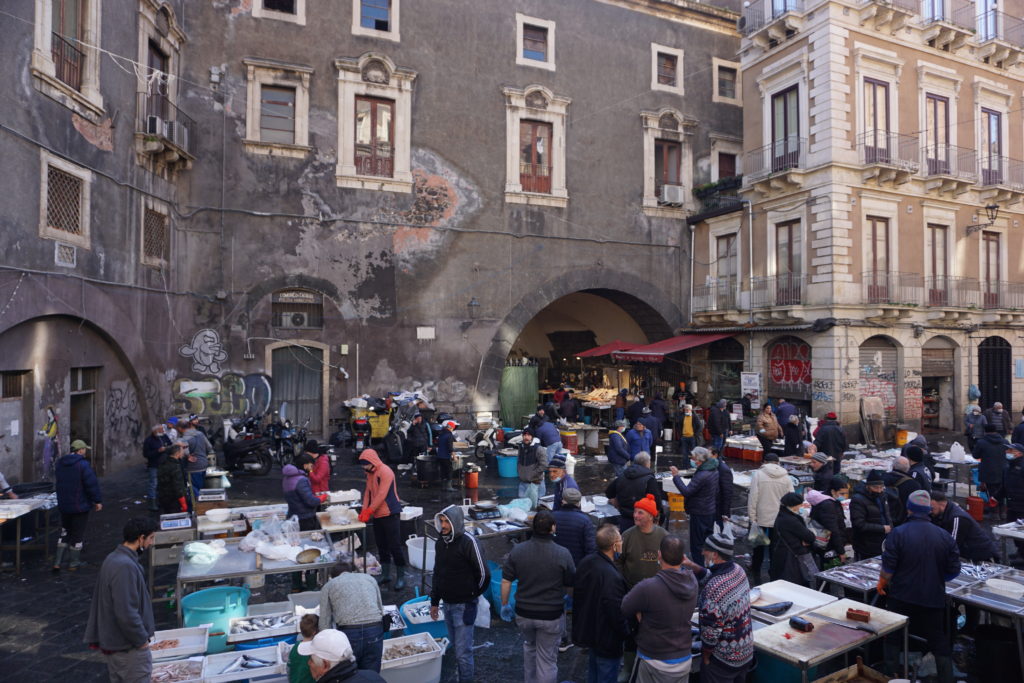
Why Did Sicily Become Part of Italy?
Sicily joined a united Italy for several reasons.
One primary motivation was the aspiration for greater political and economic stability. Before unification, Sicily experienced a tumultuous history with frequent changes in rulership, often under foreign domination. The prospect of joining a unified Italy promised a more stable and unified governance system, potentially bringing an end to internal conflicts and foreign interventions.
The movement for Italian unification was fueled by shared cultural and nationalistic sentiments among many Sicilians. There was a growing sense of common identity and a desire to unite under a single Italian nation. Joining a unified Italy was an opportunity to be part of a larger, cohesive nation that shared common values, language, and historical heritage.
There were also expectations of economic development and modernization that came with being part of a larger, unified nation. Sicily saw potential economic benefits from increased trade, infrastructure development, and access to resources that a unified Italy could offer. When Garibaldi landed on the west coast of Sicily in 1860, espousing ideas of unification, this economic promise played a significant part in Sicily’s willingness to join a united Italy.
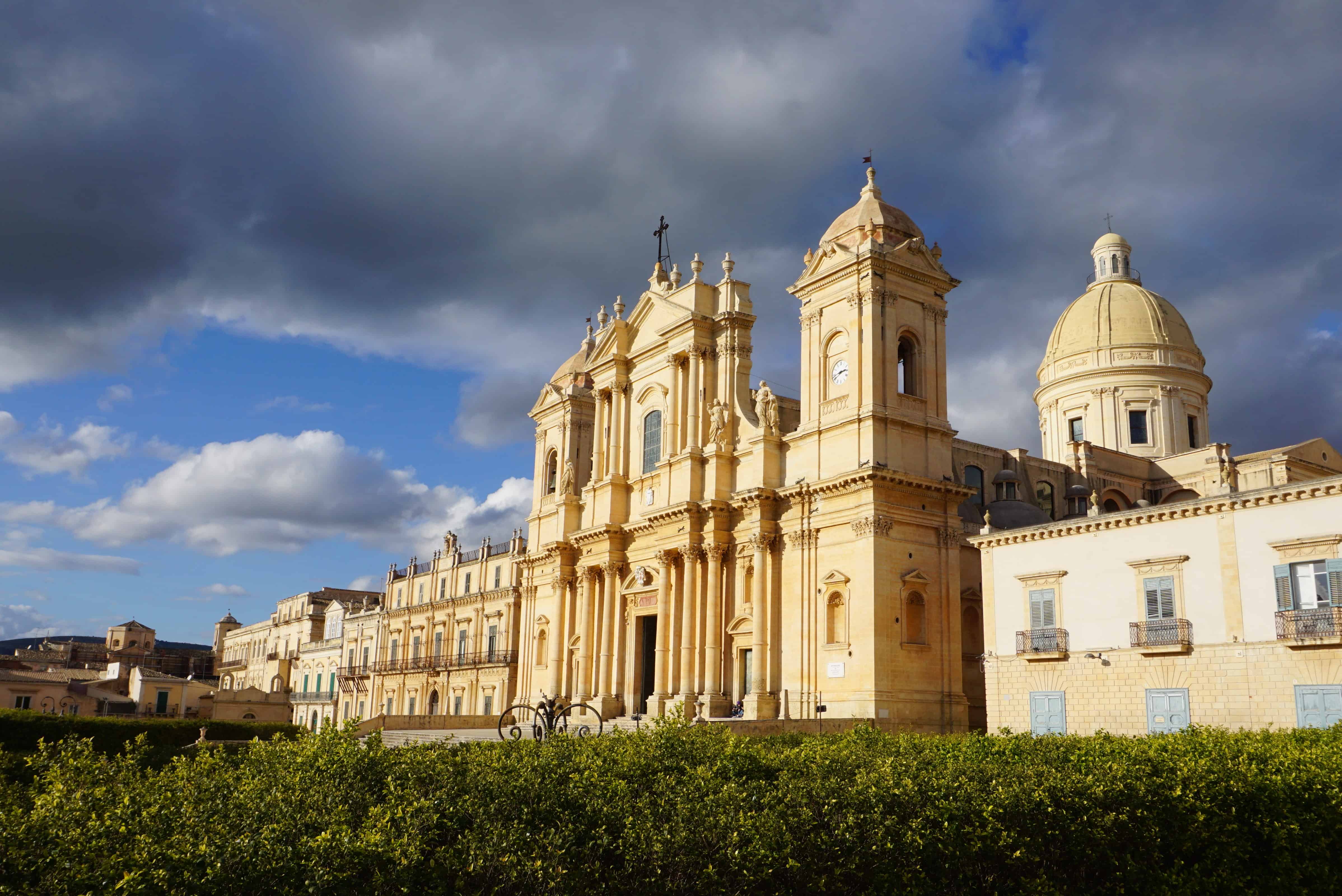
Is Sicily a Country?
No, Sicily is not a country.
Unlike Malta, which is an independent country and not part of Italy, Sicily is a region in Italy.
While Sicily has a distinct cultural identity and its own regional government, it doesn’t have the status of an independent nation.
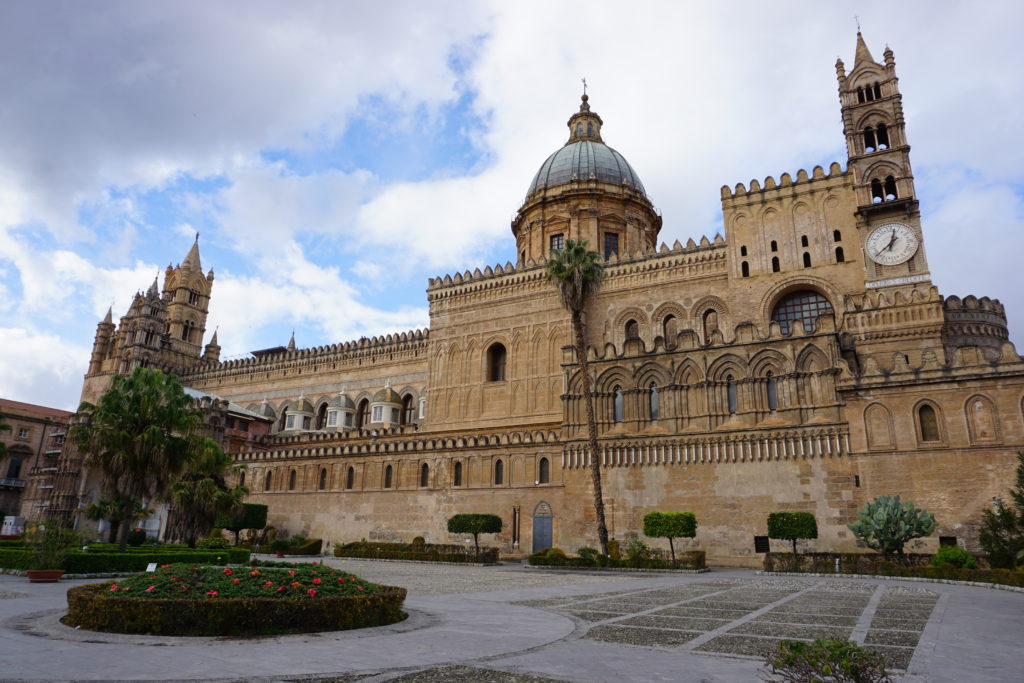
Does Sicily Have its Own Government?
Yes, Sicily has its own regional government, the Sicilian Regional Assembly, which governs the island and manages internal affairs.
Does Sicily Have its Own Parliament?
Yes, Sicily has its own regional parliament, the Sicilian Regional Assembly. This legislative body is responsible for governing the region, making decisions on local matters, and overseeing policies within the framework of Italy’s national laws and regulations.
The Sicilian Regional Assembly holds authority over various regional matters, including agriculture, transportation, tourism, cultural heritage, education, healthcare, and some aspects of local taxation. It manages regional budgets, infrastructure development, environmental policies, and economic initiatives specific to Sicily. The local government also maintains roads (perhaps part of why driving in Sicily is so treacherous?).
The assembly also plays a role in preserving and promoting Sicilian culture, heritage, and language.
What is the capital of Sicily?
The capital of Sicily is Palermo. This bustling city situated on the northern coast of the island holds much historical significance for the island. One of the best ways to appreciate Sicily’s history of foreign occupation is to wander through Palermo and see the diverse architectural landmarks, like the Palermo Cathedral and the Palace of the Normans, reflecting centuries of cultural influences.
Is Sicily Part of Italy or Greece?
Sicily is part of Italy, not Greece. The island has been part of Italy since the 19th century when it became integrated into the Kingdom of Italy during Italian unification.
While Sicily was once a city-state under the Ancient Greeks, it has never been a part of Greece. Sicily is unequivocally part of the Republic of Italy.
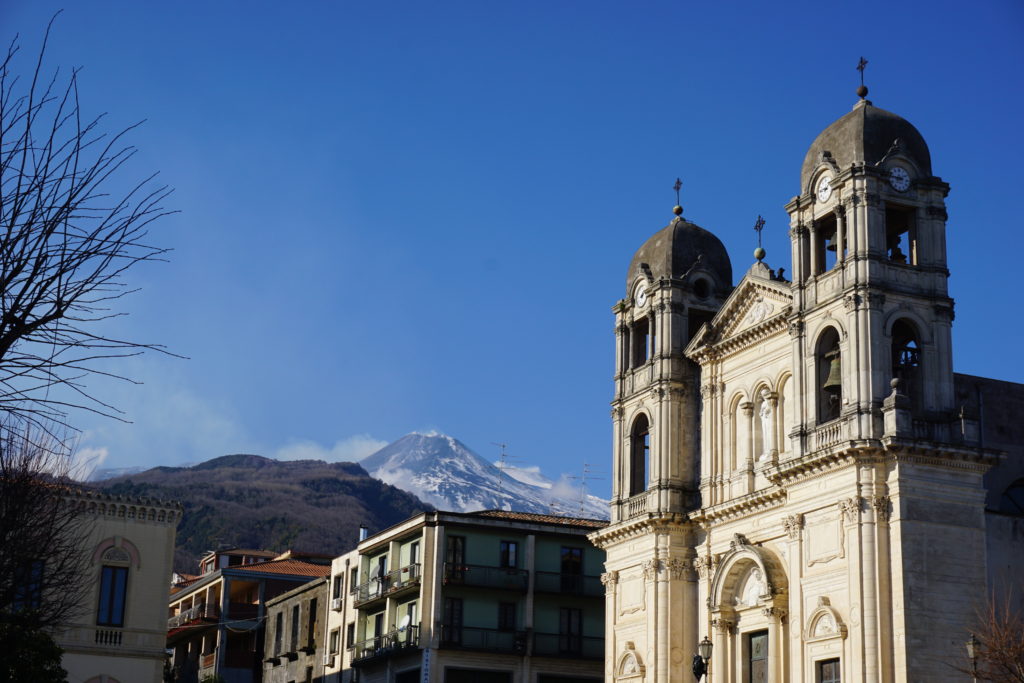
Where is Sicily Located?
Sicily is located in the Mediterranean Sea, just off the “toe” of Italy’s “boot-shaped” peninsula. It’s the largest island in the Mediterranean and sits at a strategic crossroads between Europe and Africa.
Its position in the central Mediterranean has historically made it a prized location for various civilizations due to its strategic importance for trade and influence.
Is Sicily an Island?
Yes, Sicily is an island. It’s the largest island in the Mediterranean Sea, situated just off the southern tip of Italy’s mainland and just north of the Maltese island of Gozo. Despite Sicily’s proximity to Malta (you can see Malta from Sicily, and vice versa), the two islands have distinct histories and cultures.
Is Sicily in Europe?
Yes, Sicily is in Europe. Its location in the Mediterranean Sea is considered part of the European continent. As a part of the country of Italy, Sicily is also part of the European Union and uses the Euro as currency.
Is Sicily Connected to Italy?
No, Sicily is not physically connected to Italy. It’s an island separated from the Italian mainland by the Strait of Messina, a narrow waterway between Sicily and Calabria, the southern region of the Italian peninsula. At its narrowest point, the strait measures just a few kilometers across, but it creates a distinct separation between Sicily and the rest of Italy.
Is Sicily Connected to Italy by Train?
Yes, Sicily is connected to mainland Italy by train through a combination of ferries and railways.
We took the train from Palermo to Naples, on our way from Sicily to the Amalfi Coast, and it was a cool experience. At the port in Messina, the train is decoupled and loaded onto a ferry, then transported via ferry across the Strait of Messina. Back on land, the process is reversed and the train goes on its way. It was my first and only time taking a ferry while on a train, and I thought the experience overall was very neat.
How Far Is Sicily From Italy?
Sicily is about 2.5 kilometers (1.6 miles) away from mainland Italy at its closest point. It takes about 20-30 minutes to travel between Sicily and mainland Italy by ferry.
Where is Sicily on the Map?
This map shows Sicily’s location in relation to mainland Italy and the Mediterranean.
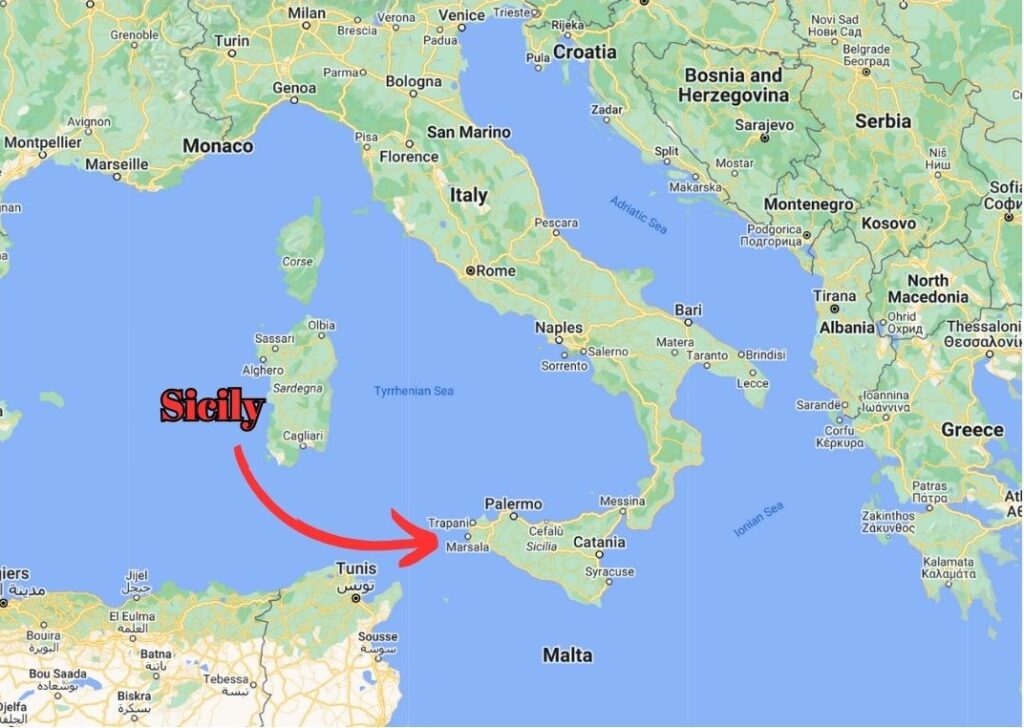
FAQ: Is Sicily Part of Italy?
Sicily is not a country or a city. It is an autonomous region of Italy and the largest island in the Mediterranean Sea. While it is not officially a separate nation, Sicily has a unique identity and character distinct from mainland Italy. It has its own language, traditions, and cuisine, making it an enticing destination for many tourists.
No, Sicily is not its own country. It is an autonomous region of Italy, located in the southernmost part of the country. Despite its distinctive culture, history, and language, Sicilian sovereignty is not internationally recognized. Therefore, while Sicily has a certain degree of administrative autonomy, it still operates under the full jurisdiction of the Italian national government.
No, Sicily is not a separate country from Italy. It is one of the 20 regions of Italy. Although it has its own unique culture, history, cuisine, and regional parliament, Sicily remains politically attached to the mainland as a part of Italy.
No, Naples is not part of Sicily. Naples is a city located on the Italian mainland in the Campania region, while Sicily is the largest island in the Mediterranean Sea and is separate from the Italian mainland.
Yes, Sicily, as a region of Italy, is part of the European Union (EU) since Italy is a member state of the EU. Therefore, Sicily, like other regions within Italy, falls under the umbrella of EU membership and regulations.
Yes, on most days you can see Sicily from the Italian mainland. Visibility largely depends on weather conditions and distance.
Sicily is part of Italy. Sicily has been part of Italy since 1860 during the unification of Italy.
Yes, Sicily is part of Italy and falls under the governance of the Italian state. It is one of Italy’s five autonomous regions, meaning it has its own regional autonomy but operates within the framework of the Italian government.
Yes, Sicily is a region of Italy. Although physically separated from the mainland by the Straight of Messina, Sicily has been one of Italy’s regions since its unification in 1861.
The primary language spoken in Sicily is Italian, the official language of Italy. However, Sicilian, a distinct regional dialect, is also widely spoken and holds cultural significance on the island. Sicilian has unique characteristics and vocabulary, but Italian is the standard language used in official settings, education, and formal communication throughout Sicily, as it is in the rest of Italy.
Yes, if you’re from Sicily, you are Italian. Sicily is part of Italy, so Sicilians are considered Italian citizens and part of the broader Italian nation. Sicily contributes to Italy’s diverse cultural landscape while maintaining its own regional identity within the country.
Sicily is known for many things, including its rich history, but is probably most famous for its unique cuisine. Sicilian cuisine is a blend of Italian and Arab influences. Some popular Sicilian dishes include arancini, fried rice balls, and cannoli.
No, Sicily is not a city in Italy. Sicily is an island located in the Mediterranean Sea and a region in Italy.
Sicily and Italy are separated by the Straight of Messina, a narrow body of water that stands between the island of Sicily and the Italian region of Calabria.
Final Thoughts: Is Sicily Part of Italy?
So there you have it: Sicily is a part of Italy. It’s an autonomous region within the Italian Republic, allowing it a certain degree of self-rule within the framework of Italian national law. I hope this post has answered all your questions about this beautiful island, and perhaps even inspired you to travel there yourself. Sicily is one of the best family destinations in Italy and will delight travelers interested in history, culture, and nature alike.
